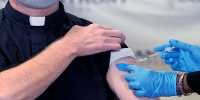You might be asking why polio is still an issue in 2022 given current news. Almost everyone in the United States has been immune to the poliovirus for more than 60 years because of vaccinations. By 1979, polio was regarded as being eradicated in the United States due to an incredibly successful polio vaccination campaign that started in the 1950s when the first polio vaccinations became available.
Unfortunately, certain American communities still have lower polio immunization rates than are recommended. The prospect of polio returning to the United States is real because so many people have not had the vaccine.
As a clinical pharmacy professor, I teach aspiring pharmacists about the effectiveness, significance, and disease prevention of vaccines.
When a man from Rockland County, New York, was diagnosed with polio in July 2022, the first such diagnosis in the United States in a decade, long-standing concerns about declining vaccination rates surfaced. The patient had been exposed to a modified live vaccination strain imported from abroad and went on to develop the disease’s severe, paralytic form.
Then, on September 9, 2022, New York proclaimed a state of emergency as a result of the continuous propagation of the poliovirus. Using wastewater surveillance, officials have discovered 57 samples of poliovirus in wastewater from four New York counties. Near New York City, in the same county as the adult patient, more than half of those cases were found.
The Centers for Disease Control and Prevention determined that the United States now satisfies the World Health Organization’s definition of “a country with circulating vaccine-derived poliovirus” as a result of the ongoing poliovirus detection in wastewater.
There are two primary poliovirus vaccines: Today, there are two main polio vaccines in use all throughout the world. The oral attenuated (or weakened) poliovirus vaccine is administered as oral drops, occasionally on a sugar cube, while the inactivated poliovirus vaccine is administered as an injection.
Since 2000, the United States has only administered the inactivated poliovirus vaccination, which contains no live virus and cannot spread disease. But the oral attenuated poliovirus vaccination is still utilized in nations where the poliovirus is still present, such as Pakistan and Afghanistan.
The weak live vaccination used in other nations can, in extremely rare circumstances, change back into its virulent form and cause paralysis. It is thought that this is how the adult in New York came into touch with the virus.
How polio “herd immunity” is established: Herd immunity determines how well a population is defended against a pathogen like a poliovirus. When a group of people, or the “herd,” reaches a certain level of immunity, it can stop a pathogen from spreading from one person to another, killing the pathogen.
The predicted number of others that an infected person would transfer the disease to if they were susceptible is used to calculate the herd immunity threshold for a particular disease. The greater the potential infection rate, the greater the proportion of the community or population that must be immunized in order to stop the disease’s further spread.
For each occurrence of the poliovirus, experts predict that between five and seven vulnerable persons would contract the disease. These estimates led specialists to the conclusion that in order to stop the transmission of the poliovirus, at least 80% of a community or population needed to be immunized.
Decreased vaccination rates: Polio immunization rates vary widely across the United States.
The CDC advises giving infants and young children the inactivated poliovirus vaccination in four doses: at two months, four months, six to eighteen months, and four to six years of age. Three doses are regarded as the minimum amount of immunization for individuals who start the vaccination process later, such as older kids, teenagers, or adults. This is due to research showing that three doses of the inactivated poliovirus vaccine offer between 99% and 100% protection against serious illness.
Additionally, according to the 2-year-old age group, which is the only data that is available by county: Rockland 60%, Orange 59%, and Sullivan 62%, three-dose vaccination rates may be significantly lower in several areas and counties of New York, such as Rockland, Orange, and Sullivan. In fact, 46% of the counties in New York had poliovirus vaccination rates for 2-year-olds that are below the herd immunity standard of three doses.
Despite the fact that all U.S. states currently have herd immunity levels for poliovirus above 80%, there are still pockets of unvaccinated people in the nation who have not gotten a total of three doses of the inactivated vaccine in their lifetime.
With 97.9% of kindergarteners receiving the vaccine in the 2020–2021 school year, New York State, for instance, has one of the highest rates of kindergarten polio vaccination in the nation. However, according to the New York State Department of Public Health’s most recent estimates, just 79% of the state’s 2-year-olds had received all three doses of the polio vaccine.
Recommended vaccinations: Doctors advise routine catch-up throughout adolescence when children fall more than one month behind on the recommended polio immunization schedule.
There was no reason for health professionals to think an adult would come into contact with poliovirus in the U.S. because the majority of adults in the country today were immunized as children and the country had eradicated polio as of 1979. Because of this, the standard adult vaccination schedule does not include catch-up vaccination for adults.
But the CDC revised its recommendations in August 2022. The CDC now advises that all individuals who are unvaccinated or under-vaccinated get a poliovirus vaccination in light of the fact that there are communities where poliovirus vaccination rates have fallen below the 80% threshold required for herd immunity.
A single lifetime booster dosage of the poliovirus may also be beneficial for some individuals who have received all recommended vaccinations but are still at high risk of exposure, according to the CDC. This includes anyone going to regions where poliovirus has not been eradicated or medical professionals who treat patients who have the disease.
Consult your primary care physician or pharmacist if you’re unsure whether you need a vaccination or what to do next.
















